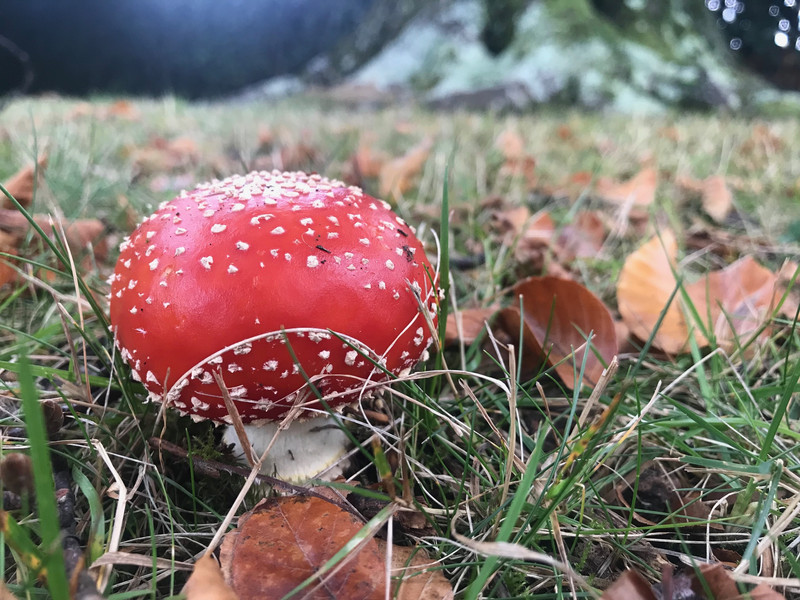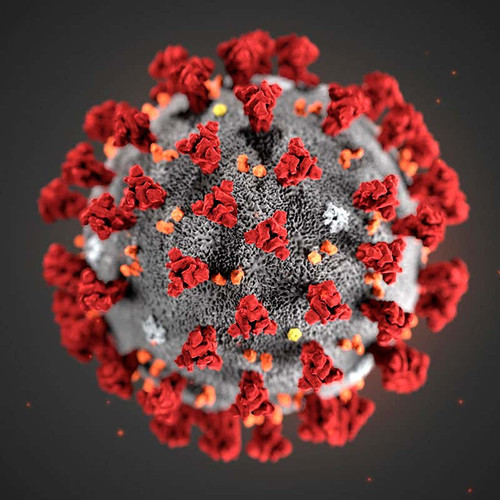The FUNgi around us
Another NEVology from local science communicator, Helen Jack
AUTUMN IS certainly upon us and our lockdown wellbeing walks quickly moved from teddy sightings to mushroom spotting. The star attraction is Amanita muscaria, otherwise known as fly agaric, fly amanita or ‘the red ones with white spots’.
Amanita muscaria
I was terrified of being poisoned by toxic shrooms as a child, but in recent years I have realised how amazing and totally necessary fungus is. Fungi are literally in a league of their own, belonging to neither plant nor animal kingdoms but to their own fungi kingdom. Fungi don’t make food through photosynthesis like plants do. They are more like animals, getting their nutrition from ‘eating’ other things.
Fungi do many different jobs in the ecosystem; some help to decompose bits of dead plant and animal in the soil, some help to break down dead wood, and some even exchange nutrients with plants.
So why do the red mushrooms with white spots pop up where they do – under trees? I called Dr David Orlovich, mycologist (fungi scientist) and head of Otago University’s Botany Department, to chat about the where, why and how of A. muscaria.
It turns out that the A. muscaria mushrooms we see are just the small tip of a large fungal iceberg. The main body of the fungus is actually made up of tiny underground threads within the soil that grow around the roots of trees like little knitted socks. The fungus transfers phosphorus from the soil into the tree roots, and in exchange the tree provides them with sugars to eat.
In fact, trees would not be able to survive without the phosphorus the fungi provide (unless you fertilised them with a lot of super phosphate). There is even research that shows trees can transfer carbon to each other through their underground fungal networks.
The A. muscaria fungi is mostly associated with pine, silver birch and beech trees and was inadvertently introduced into New Zealand on the roots of imported seedlings. It has now spread to native forests in some areas, which isn’t a problem for the native trees, but can displace their native fungi.
Cooler temperatures and damper conditions at this time of year stimulate the fungi to produce mushrooms – the equivalent of plants producing fruit. Tiny spores (fungi ‘seeds’) drop from the mushrooms and are blown away on the wind but most don’t end up far from the mushroom. Spores mate with other spores and then grow through the soil to try and find more plant roots to live with.
Not all mushrooms are associated with trees. Some, like the field mushrooms that we pick and eat, are produced by fungus that lives in the soil and feeds off bits of dead plant. But be careful before you go mushroom foraging – some shrooms are edible, but many, including ‘the red one with white spots’ are poisonous and can make you very sick (or at least a more interesting version of yourself) if you eat them.
I’d leave the mushroom foraging to people who really know what they are doing, or to your designated household supermarket shopper, and appreciate the marvel of wild mushrooms with your eyes rather than your mouth. The coming frosts will knock the mushrooms back, so make the most of the last few weeks of shroom spotting on your walks!





